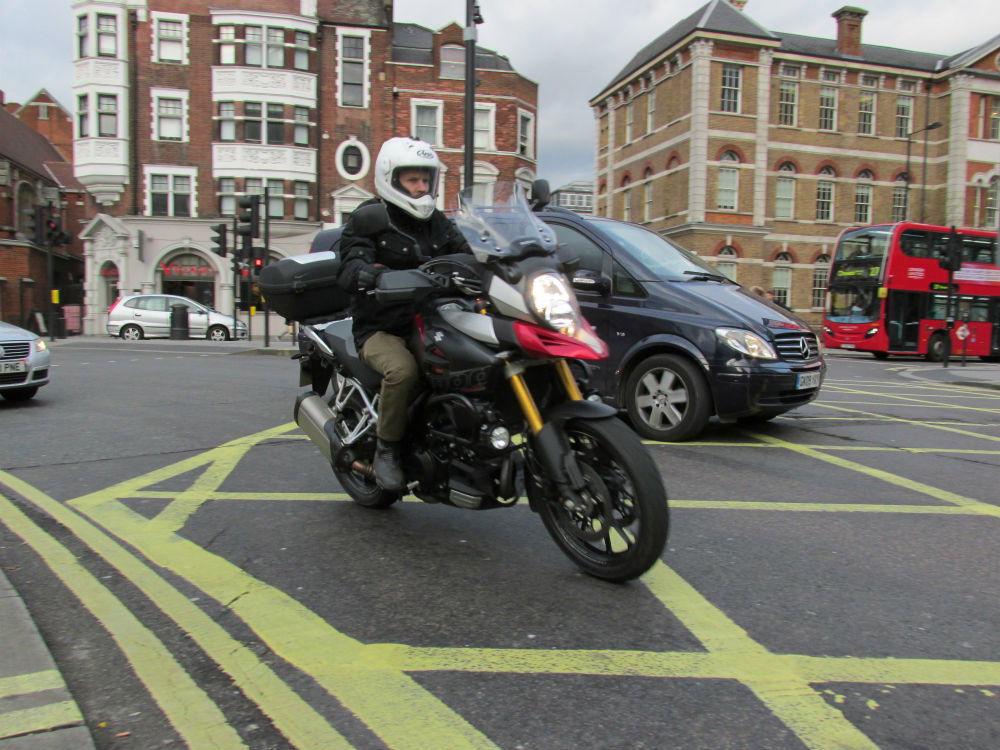2014 Honda Fireblade CBR1000RR-SP review
The 2014 Fireblade CBR1000RR-SP is the first 'special' in the 21-year history of the Fireblade. We put it to the test in Qatar.

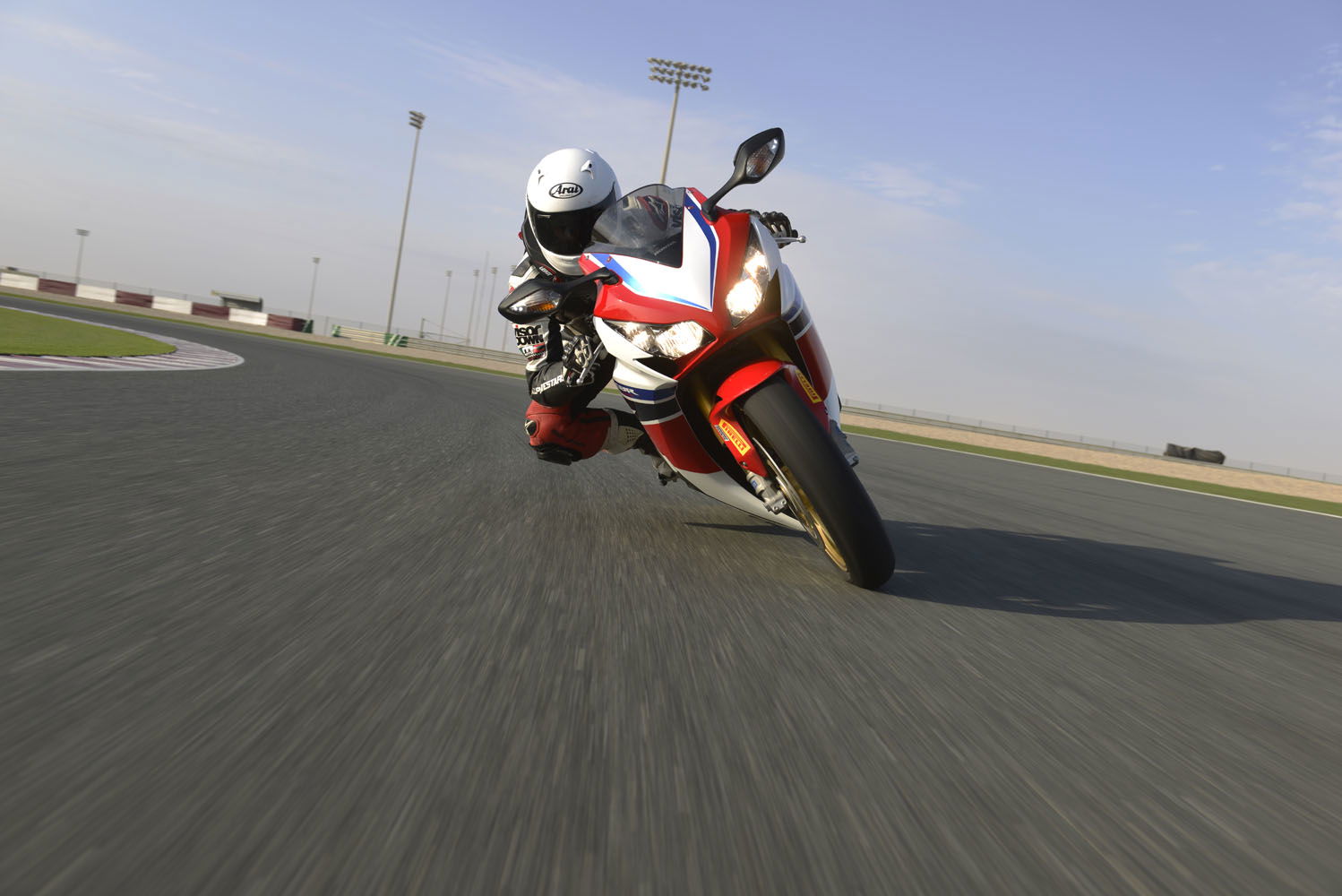
Honda's Fireblade needs no introduction but I’ll give it a small one anyway. In its 21st year, and with the 2014 Fireblade CBR1000RR-SP, its capacity, styling and performance have changed to keep it competitive, but the continuation of the name and its focus on giving the rider 'total control’ have remained the same.
It defines the word superbike and although this word is used far too often, the Fireblade is a motorcycling icon. Since the release of the original 1992 Fireblade, one-in-three superbikes sold over 750cc are Fireblades. One in three.
The 2014 Fireblade CBR1000RR-SP is the first track-focused Fireblade Honda have produced in its 21-year history. You could argue that the TT100 Evolution Fireblade was the first track-special but although it was commissioned by Honda, it wasn’t built by the factory.
On the surface, the 2014 Fireblade SP looks like it’s just a Fireblade with a few exotic parts bolted on. I say ‘just’ and I don’t mean that like it’s a bad thing, it really isn’t but in typically understated Honda fashion, the level of effort, workmanship and detail that’s gone into the SP remain largely unmentioned in the bike’s brochure and press kit, it’s only when you press the engineers behind the project that you realise this is far from a standard Fireblade with a few bits bolted on.

Honda’s press kit states the top-line additions that make the 2014 Fireblade SP: Öhlins suspension front and rear, Brembo front brake calipers, Pirelli Supercorsa SP tyres, a forged top yoke, ‘selected’ pistons, a lighter subframe, a firmer grippier seat and C-ABS with unique-to-the-SP settings.
Not a bad offering at all but what you have to really squeeze Honda for is the fact that the Öhlins suspension - while it is labelled at NIX30 and TTX36 - both of which are available off the shelf, have been heavily re-worked and are unique to the SP.
The front NIX30 forks feature an outer tube 1mm larger than standard to help give the SP more stability under braking. The front axle shaft is lighter while the steering stem is made from steel not aluminium as the development team felt it offered better feedback. The top yoke has been revised too and is now forged for greater rigidity. The bolts used in the bars, yokes and front axle are lighter than standard too. At the rear, the TTX36 rear shock has been modified to suit the SP; the preload adjuster has been moved to make it easier to reach on the SP. The connecting-rod has been lengthened and the swinging-arm pivot point changed too, giving the rear slightly more flex with the aim of giving the rider more feel.
That, I think you’ll agree, is more than just bolting on top quality suspension.
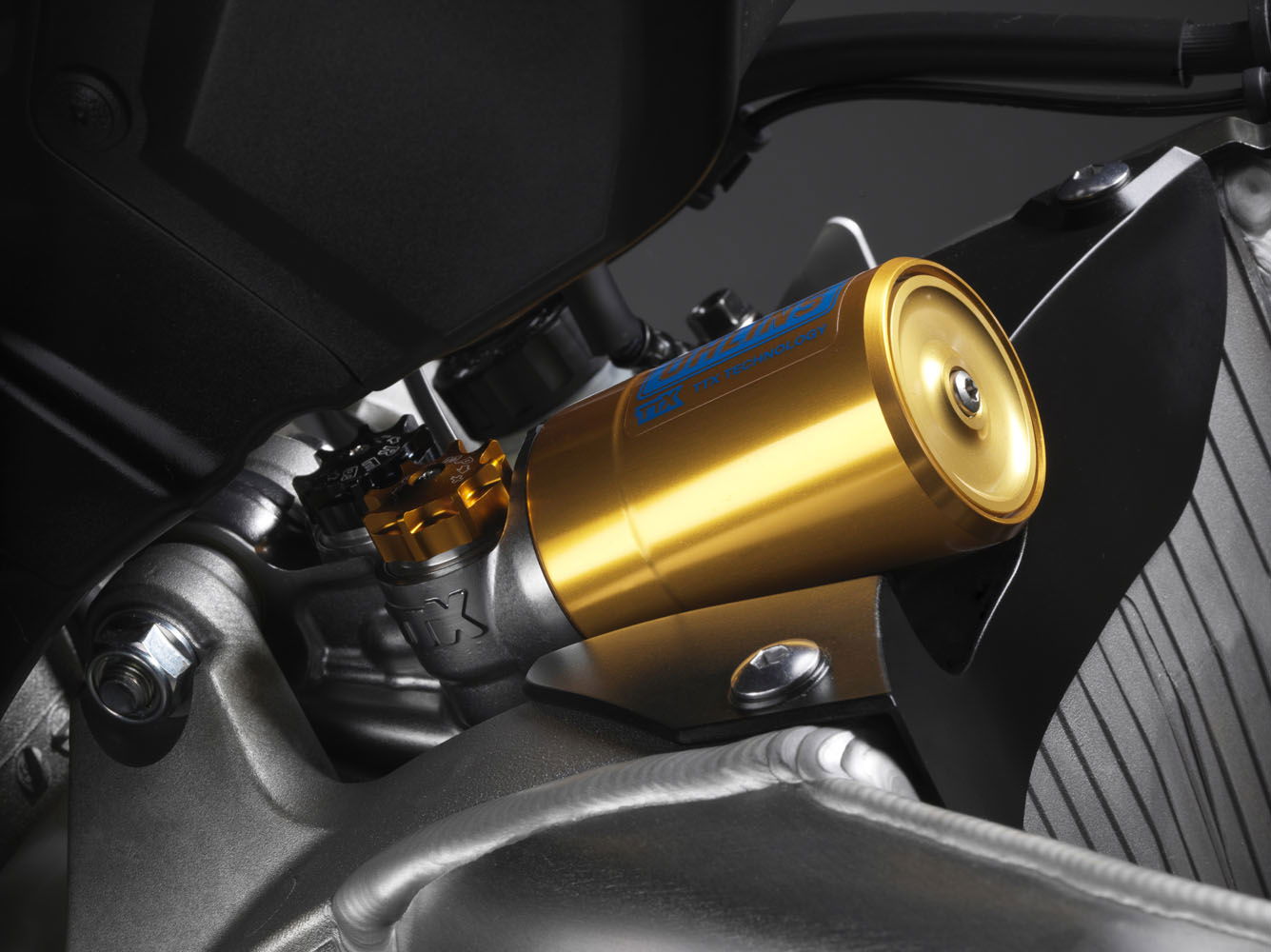
The wheels remain the same as the standard 2014 Fireblade but the Brembo M4 monobloc front brakes are different. Such is Honda’s attention to detail that the Brembo calipers on the SP were developed for that model. Instead of featuring two pistons of the same diameter in each caliper, the SP’s calipers feature a 30mm piston and 32mm piston, as this was the combination the SP test team felt worked the best. Would you and I notice the difference? I dare say, we wouldn’t but this level of detail is what makes the SP special. Sintered pads are the icing on the cake.
The SP isn’t just suspension and chassis changes, the engine has been worked on as well. While the headline is that Honda have selected pistons and con-rods that are closer to the designed weight, therefore offering improve performance, especially at high revs, there are other changes too. The pistons are +/- 1g of the 177g designed weight, as opposed to +/- 3g in the standard Fireblade. Each bike’s four pistons are also picked so that they closely match each other.
The standard Fireblade and the SP feature a revised cylinder head for 2014. The inlet and exhaust ports have been re-shaped and polished to improve gas flow. The intakes now copy the design used on the WSB Fireblade and are now slash-cut. The cylinder walls are coated with nickel-silicone carbide to further reduce friction and increase reliability, while the exhaust pipe diameters have been reduced by 3mm in size and a connecting pipe added between cylinders two and three to improve torque output.
Honda claim the changes result in a 6.5% increase in gas flow, enabling the SP to produce a couple more horsepower (178bhp @ 12,250rpm) and a couple more foot-pounds of torque (85lbft @ 10,500rpm) at peak. The torque and power curves look very similar to the previous model, despite the previous model’s torque peaking much lower down the rev-range at 8,500rpm.
Honda’s Combined-ABS is a £600 option on the Fireblade SP. The brake-by-wire system is very similar to that fitted to other models like the CBR600RR. The difference is that the ‘map’ used on the SP is unique and designed with subtle changes to improve track performance.

The SP is fitted with Pirelli Supercorsa SP tyres as standard, the rear subframe has been made lighter as there’s no provision for pillions and the seat is firmer and grippier.
It’s surprising that Honda barely mention the slipper clutch fitted in the SP. For track riding, slipper clutches make life a whole lot easier, helping you lap faster, smoother and safer. Another thing that doesn’t get much air time is the riding position; the bars are 34mm wider and set 5-degrees further away from the rider and the foot-pegs are set 10mm further back. The double-bubble screen is there to help push more air over the rider.
Funny then that while thousands of hours have gone into the SP, the one thing that immediately makes it feel different to the standard ‘Blade is a no-cost option; the wider-set bars. Wide and set much flatter, they feel more like you’re grasping onto an oar of a rowing boat.
We rode for two sessions on the Pirelli Supercorsa SP tyres that come as standard on the Fireblade SP and then two sessions on stickier Pirelli Supercorsa SC2 tyres. The bikes were setup with Honda’s track settings that are printed in the owner’s manual, essentially a couple of clicks firmer front and rear.
Losail circuit is wide, flat, featureless and deceptively fast. A few of the corners look identical and with 170bhp to play with, it’s easy to lunge into a corner carrying more speed than is healthy.
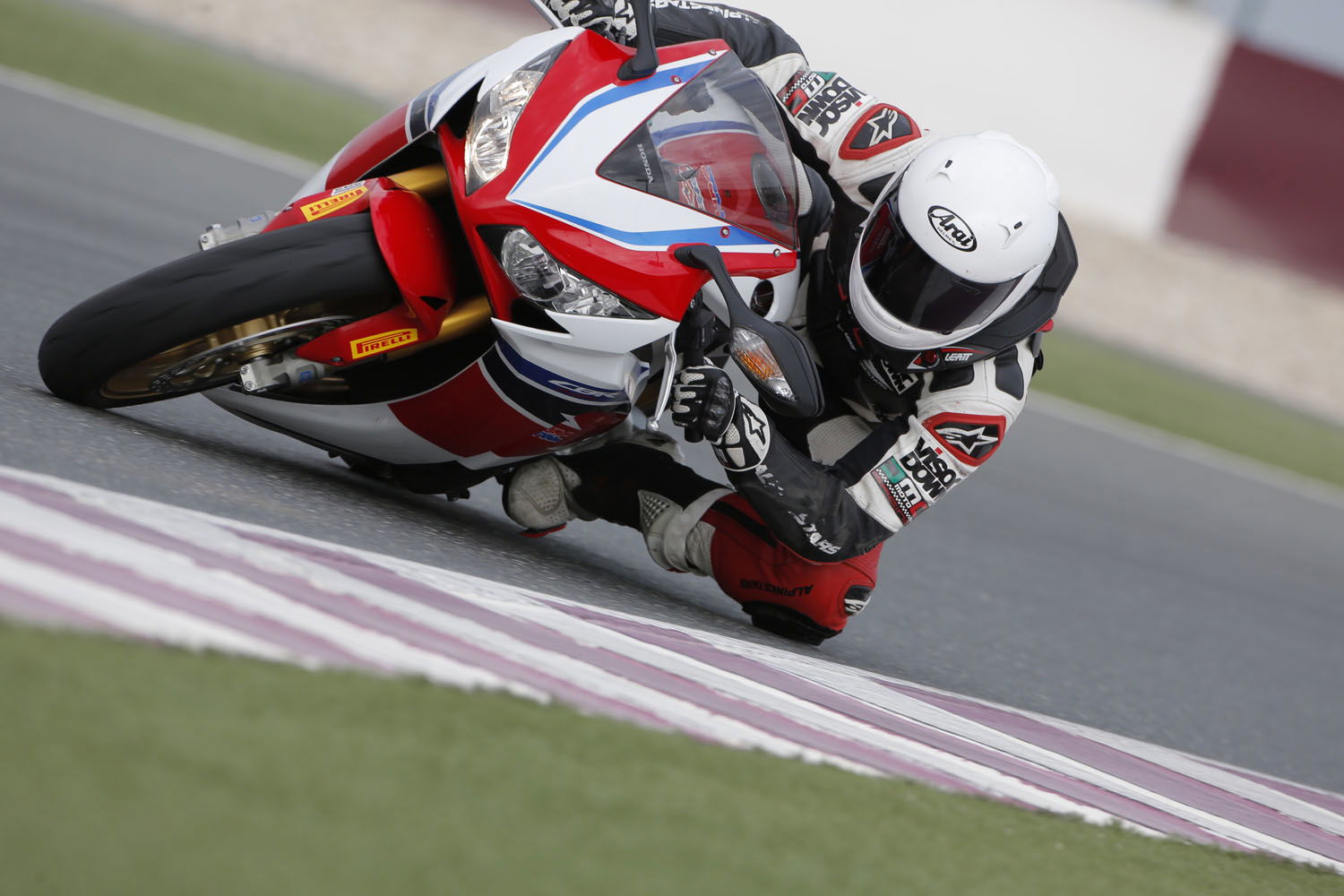
After a couple of sighting laps, I turn things up a notch. The SP is showing north of 170mph as I approach my braking marker for Turn 1. There’s plenty of power in those Brembo M4s, hauling us down to 60mph a good 10-metres ahead of where I thought I’d be. I’m confident I can brake a few metres later on the next lap and carry the brakes in closer to the apex. The next time around I brake a touch later, 3-metres at most and the moment I hit the brakes I think: ‘nope, that’s not going to work’ but keeping the lever squeezed tight while I tip in, we scrub off the excess and get somewhere close to the apex. A lot closer than I thought I’d get, anyway.
The SP feels composed under brakes and only gets flustered when you grab a handful and on a couple of occasions, when I was trying to brake that bit later and therefore grabbing, rather than forcefully applying the brakes, the C-ABS chipped in and the moment the brakes let off, I aborted the corner and sat up.
The ‘Brake-by-Wire’ setup on the Fireblade takes a small amount of getting used to. You’re not directly connected to the brakes like you would be on a conventional setup, instead your braking pressure is passed to an ECU, which activates a servo. While the brakes are very, very good - and I have thought about this long and hard - I’m not convinced you get the same amount of feel that you get from a ‘standard’ setup.
Does that mean that I am better than the C-ABS system? No. However, I do think the C-ABS system requires you to recalibrate your brain a tiny fraction in order to get used to it. Applying the front brake will always apply the rear, however you can apply small amounts of rear without activating the front.

This is all too complicated for anyone’s brain to work out, especially if you’re scrubbing off 100mph in the space of 100 metres with a tight corner fast approaching. What you do and what the system actually does are slightly different and that, I reckon, results in my brain thinking ‘we did something, and I witnessed the result but I didn't quite feel it’.
Aside from my perception of the C-ABS feel, there's no getting away from its weight; it adds a hefty 11kg to the kerb weight of the SP, meaning it tips the scales at 210kg.
The motor is a peach. At one point on the circuit you drive out of a hairpin in 1st gear winding it all the way up to the top of 4th. It takes some bravery to wind open a cranked-over Fireblade in 1st but such is the precision of the throttle and smoothness of the power delivery that after a couple of laps, I had every confidence I wasn’t going to launch myself over the border into Dubai.
You might wonder when the Fireblade’s going to get traction control. I am too. OK, so it doesn’t need it, no-one needs it, but it would be a nice thing to have. There is a lot of feel in this chassis and a lot of confidence to be had from that. I always felt like I knew where I was at when I was tapping on the power but that’s all very well when you don’t fall off. If you do fall off, you’ll probably wish you had a tiny bit of electronics to stop you blowing a 170bhp load all over the rear tyre at precisely the wrong time. It's easy to get greedy with the throttle, especially with a 1,000cc superbike underneath you. If the SP is about getting around a lap as fast as possible, with the utmost amount of control, it needs traction control.
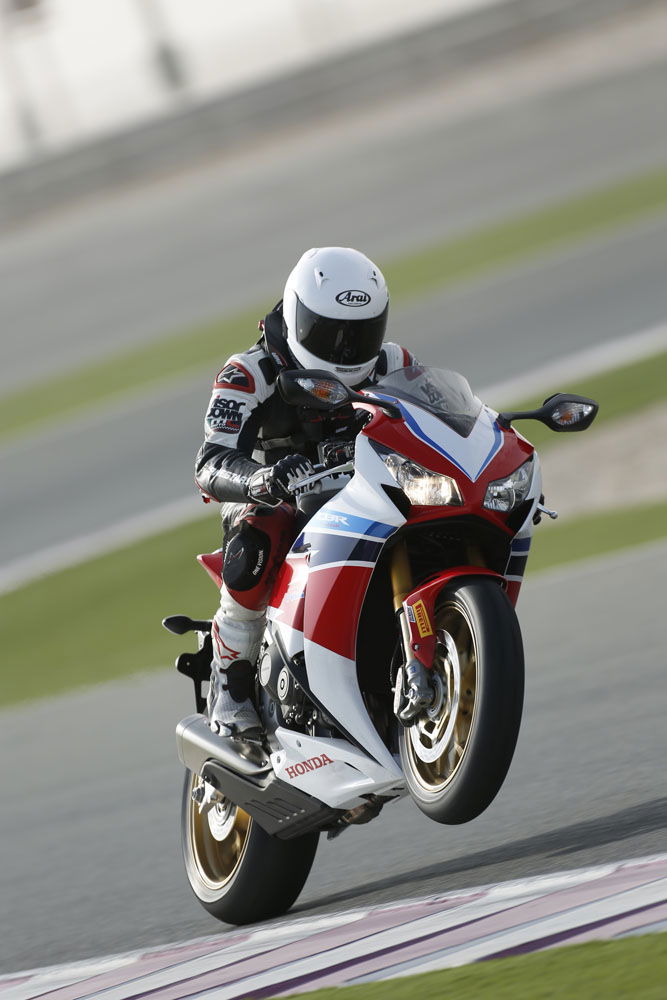
I suppose the lack of traction control is Honda saying ‘this is total control’ but that doesn’t sit very well with the Brake-by-Wire system which involves a computer making some of your decisions for you. Personally speaking, I have never lost the front on the brakes, I have, however, lost the rear many times under power.
During this launch, Leon Haslam said: “You either add lean or you add power but you don’t add both”, he is obviously correct but when you’re not as talented as him, with 170bhp at your disposal, it is easy to add both and you won’t always get away with it.
While the tyres are good, once we picked up speed I didn’t have 100% trust in them through a couple of the fast, I mean really fast, right handers. I had moments where the front felt like it was pushing winder than I wanted it to and at the same time I didn’t feel I could lean on it much more. No doubt a touch more rebound on the front would have kept the front suspension from lifting slightly under power and when I think about those corners and what you expect from a tyre, well, it was doing a solid job. Losail hides speed because it’s so flat and featureless. I have ridden on the Supercorsa SP tyres at the tight and twisty Cartagena circuit and trusted them with my life. Cartagena is tight and twisty but not that fast. Losail has some tight corners that are also scary-fast, top of 3rd gear, peg on the deck. Even a trackday tyre has a limit.

2014 Fireblade CBR1000RR-SP on SC2 tyres
When we switched to the Supercorsa SC2 tyres, the whole bike took a leap forward in terms of feel and performance. You can really lean on them and - as Randy Mamola would say - ride with some aggressive Body English.
With the SC2s fitted, the technical team dialled in a slightly firmer setup making the SP feel like a race bike. Ron Haslam told me to brake all the way into the apex, get my knee on the floor and squeeze the brakes on harder. There’s no way I would have win the battle in my head to do that on the Supercorsa SP tyres as the front felt like it was under duress with my regular braking but on the SC2, I could do it. Ron was doing it with the Supercorsa SPs and he says he does it with the T30 tyres fitted on his school’s CBR600s. He puts it all down to the C-ABS which he says allows you to practice without being punished for making a mistake.
It took a huge leap of faith but carrying the front brake all the way into the apex and through the apex, with my finger squeezed tight against the bar, the front end felt more planted than ever. I only let off the brakes as I thought I wouldn’t have the engine response to pick the bike up out of the corner. I have never experienced anything like it. Brake as hard as you can going into the apex, then brake even harder. The bike wants to turn back on itself. Incredible.
The additional grip from the SC2s meant I could start to dig in to what the bike had to offer. I could hold a tighter line and pick up the throttle earlier. Carry more brake into corners and relax on the bike a lot more, knowing it would go exactly where I wanted it to.
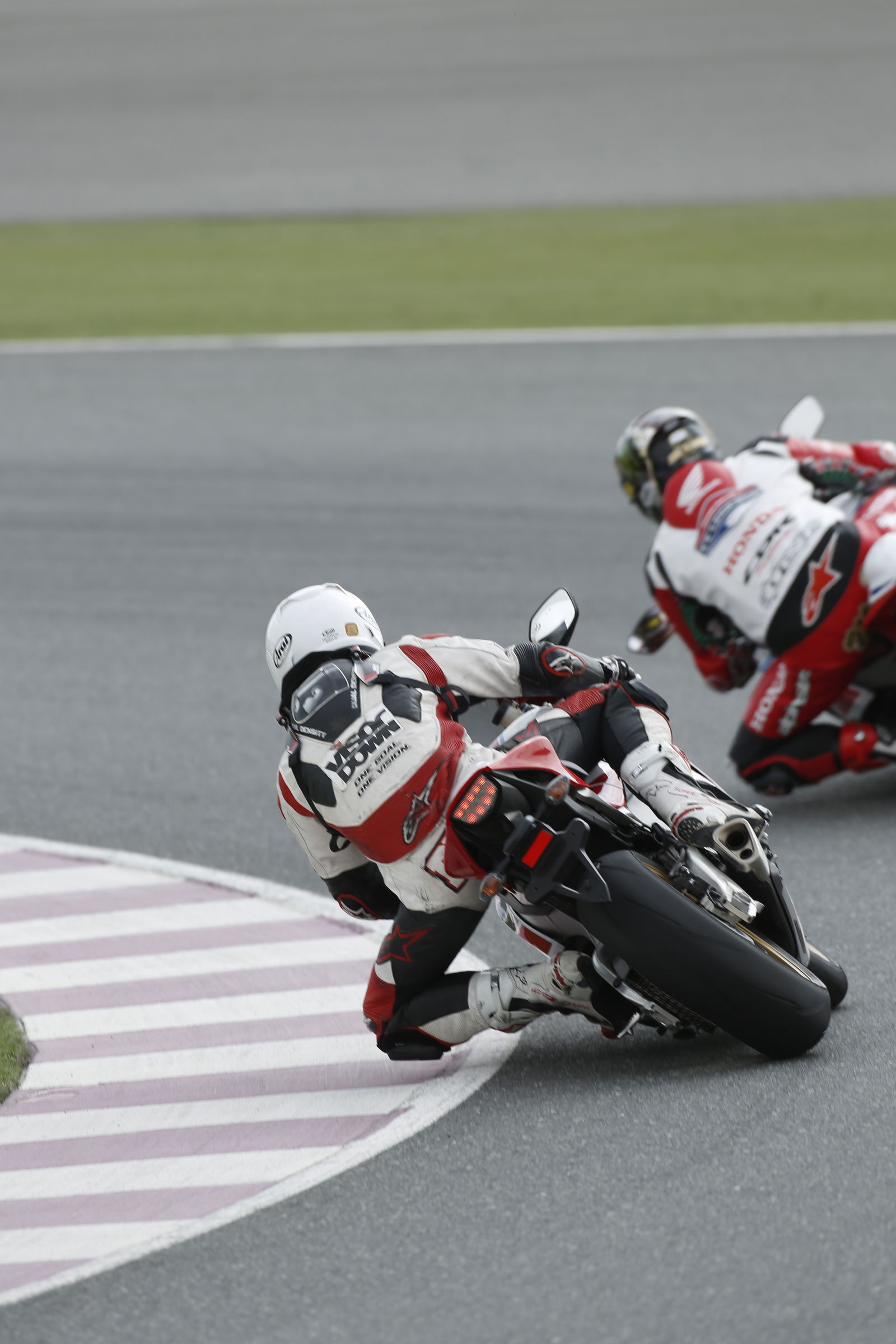
While I can live without traction control - it’s hard to adjust to a superbike without it when you’ve been used to riding with it for two years - Honda have missed a trick by not supplying the SP with a quick-shifter. You’ll definitely fit one if you buy an SP for track work.
The whole bike feels so refined except for gear changes, especially when you’re cranked over and winding the bike on three gears out of Turn 10 to Turn 12. With every gear change the bike jolts and feels cumbersome. Honda claim the SP will pull five metres on the standard bike along Losail’s 1km-long straight, a tiny gain, but with a quick-shifter you’d gain another 10 metres. That’s worth having.
This is, without doubt, the best Fireblade I’ve ridden and you’d have to come up with a really good set of reasons to convince me this isn’t the best Fireblade Honda have produced. While you can tour and commute on a Fireblade, we all know they’re designed to go as fast as possible around in circles and that’s what this SP does brilliantly.
The top-notch suspension offers infinite adjustability and just the small changes we made to our bikes between sessions showed how much you can get out of an SP once you have it dialled in to suit your riding. At £14,999 and £15,599 with ABS, the Fireblade SP faces some stiff competition but the Fireblade has always been a bike with a hardcore faithful. Over the past 21 years it’s always been near the top of the sales charts. Other models offers flahes of brilliance but the Fireblade doesn’t need to fight the latest fads to sell well.
If you don’t see yourself as a superbike rider and more a Fireblade rider, then this is the ultimate and it’s easy to see why most of the 170 machines that are coming to the UK are already spoken for.
Model tested: Honda CBR1000RR-SP Fireblade
Price: £14,999 and £15,5999 with C-ABS
Availability: Feb 2014

